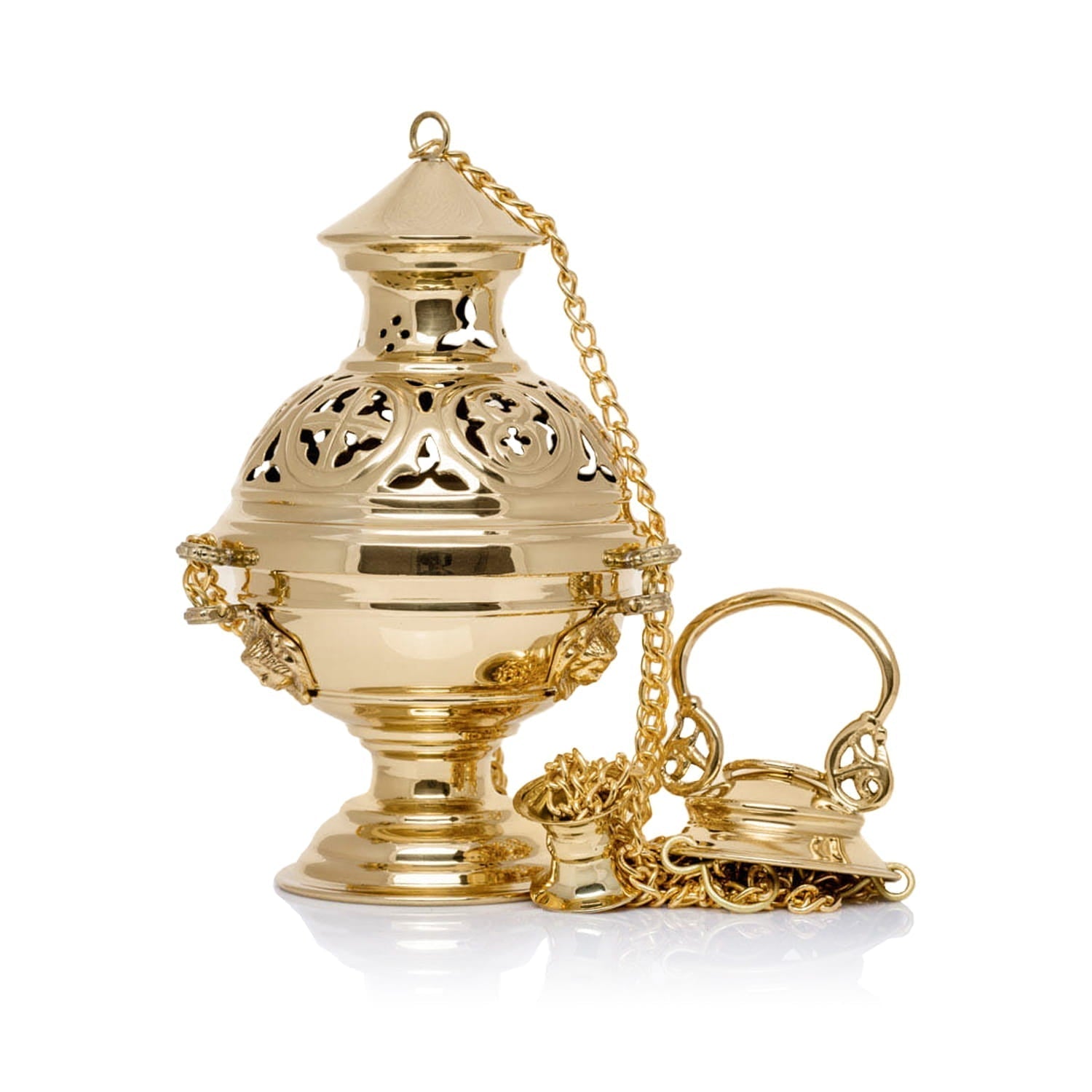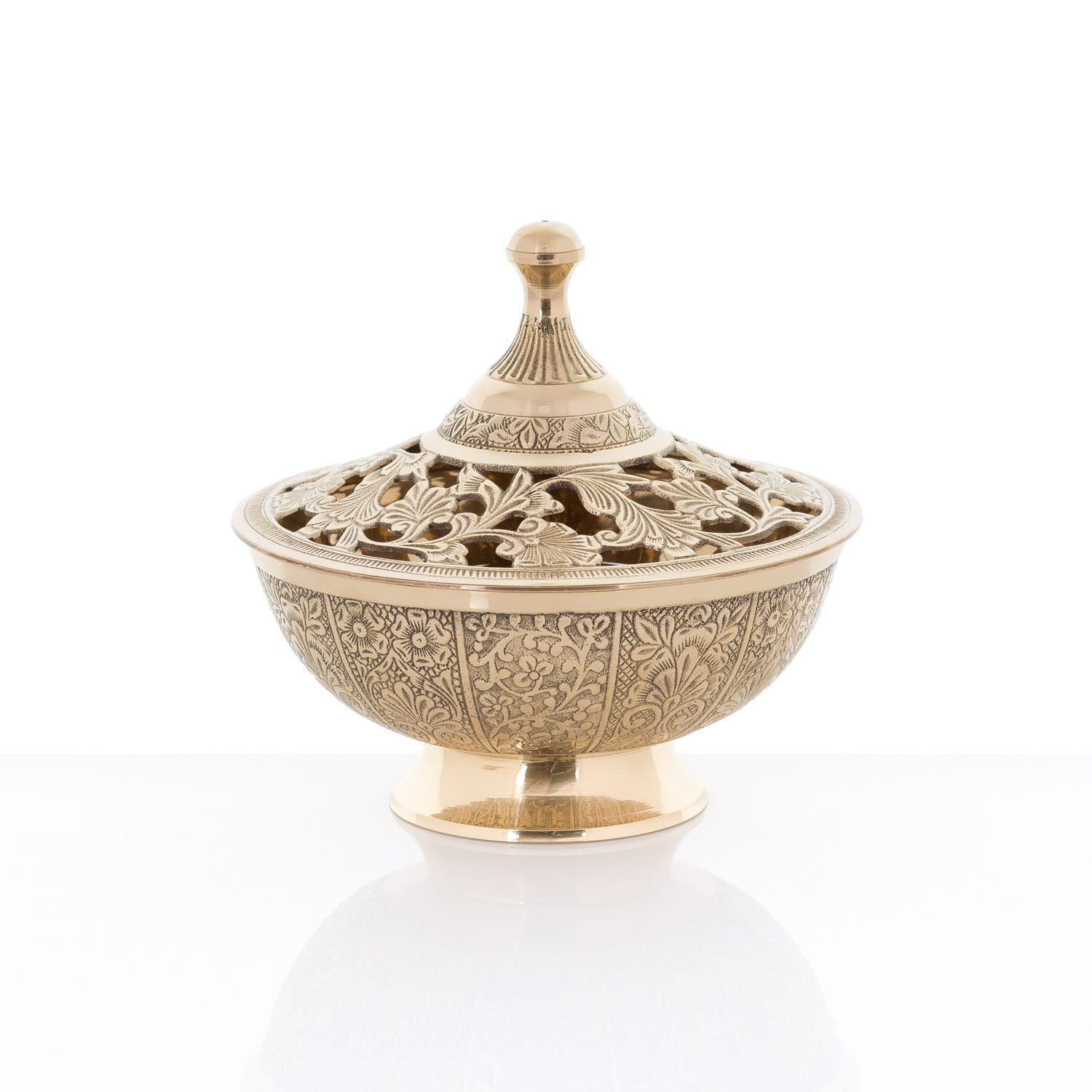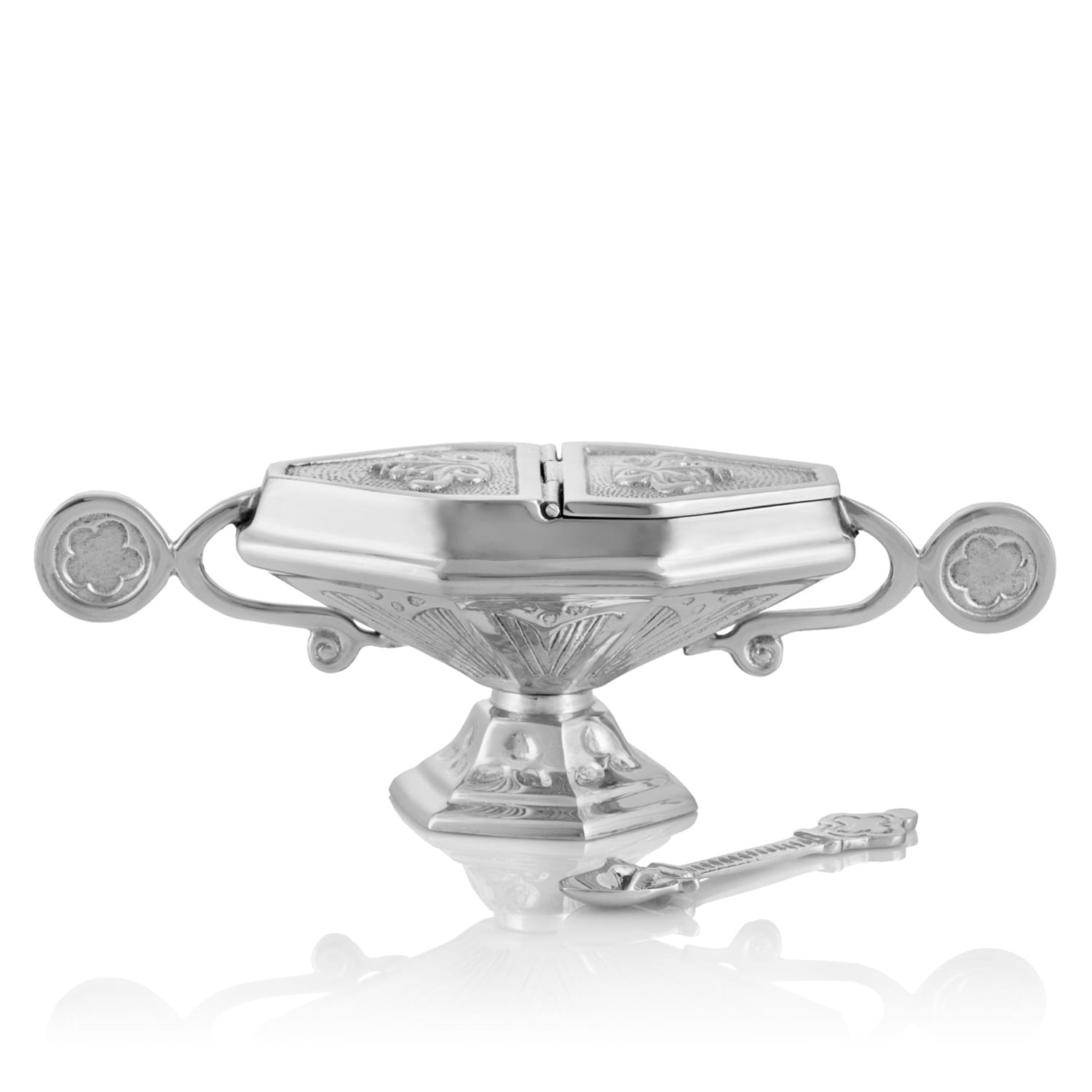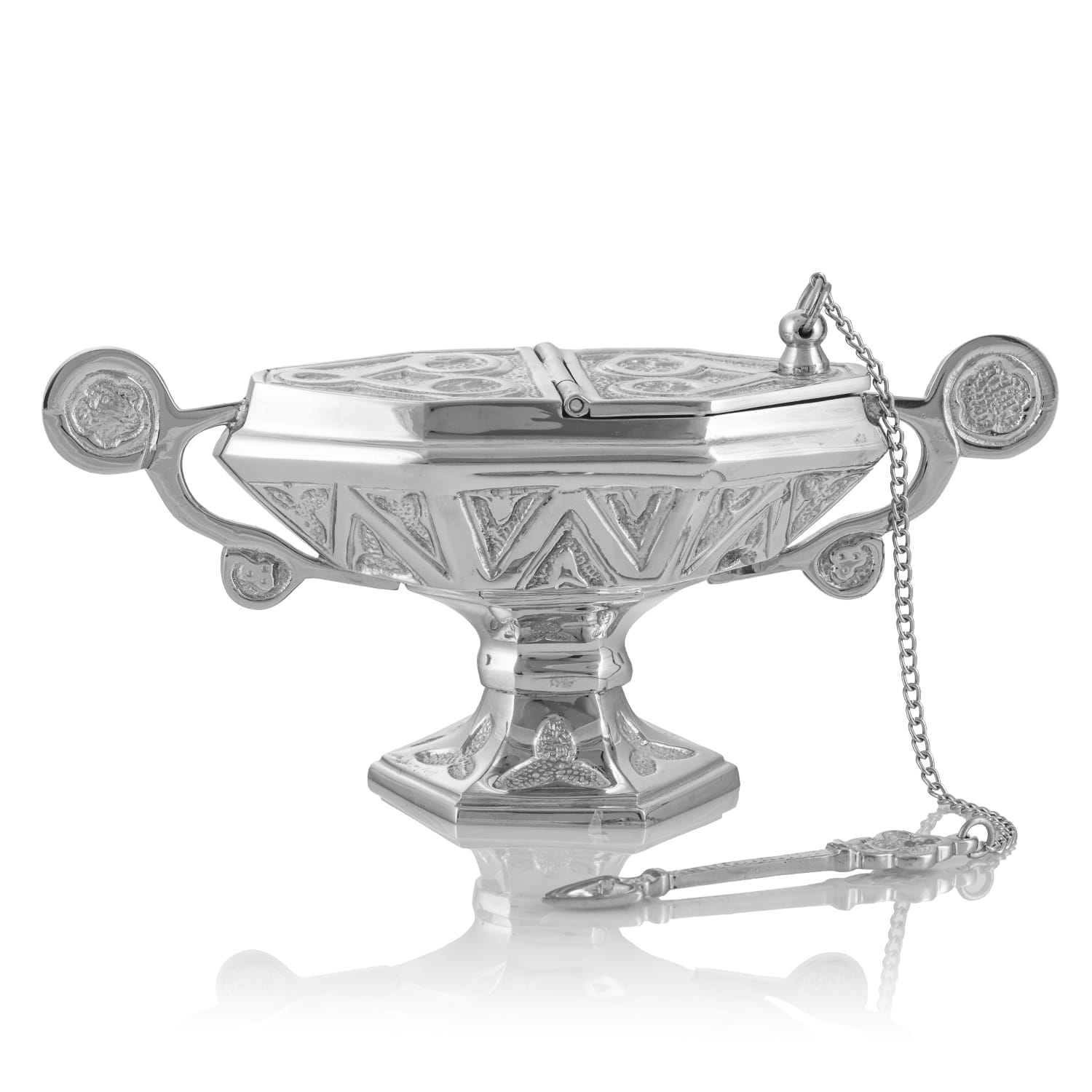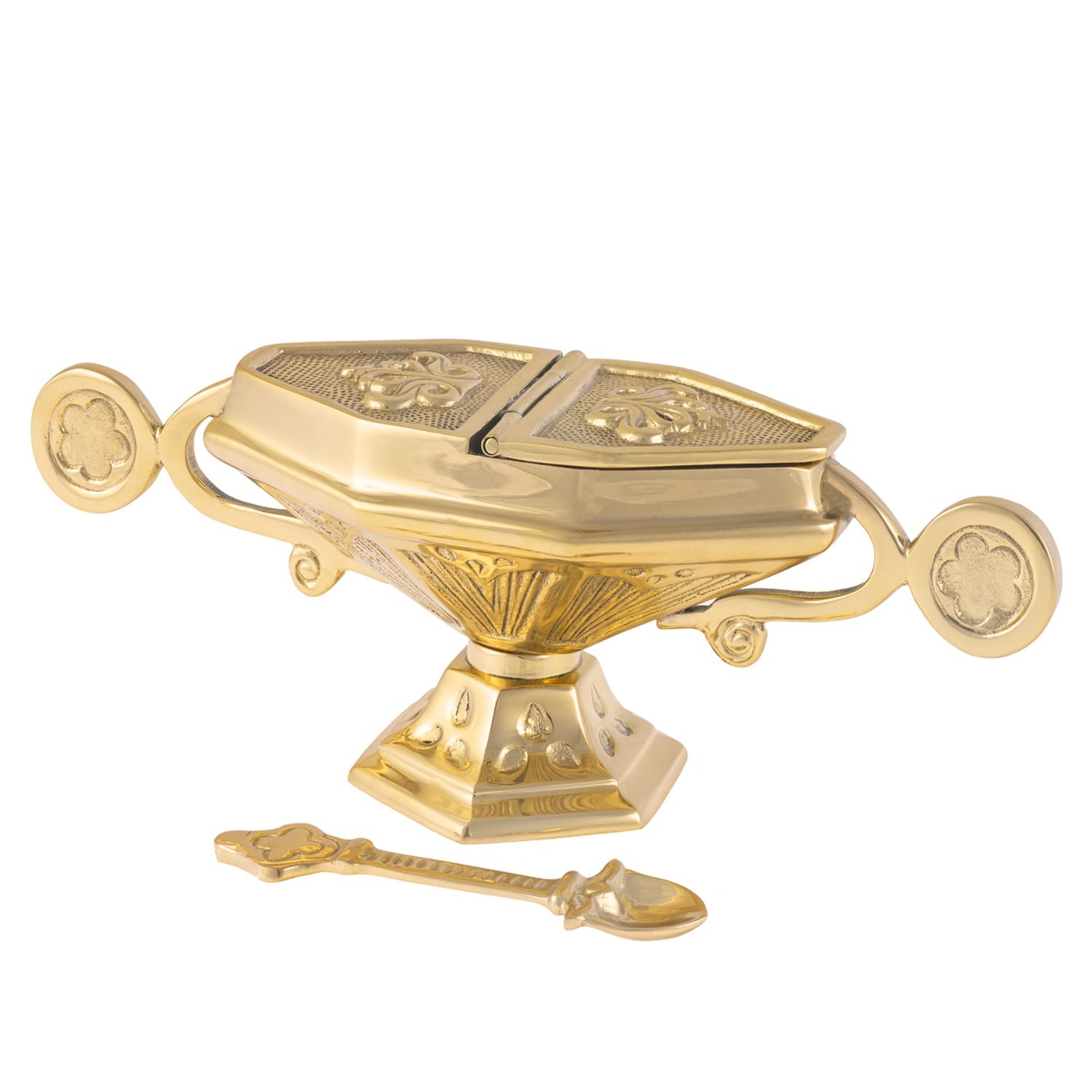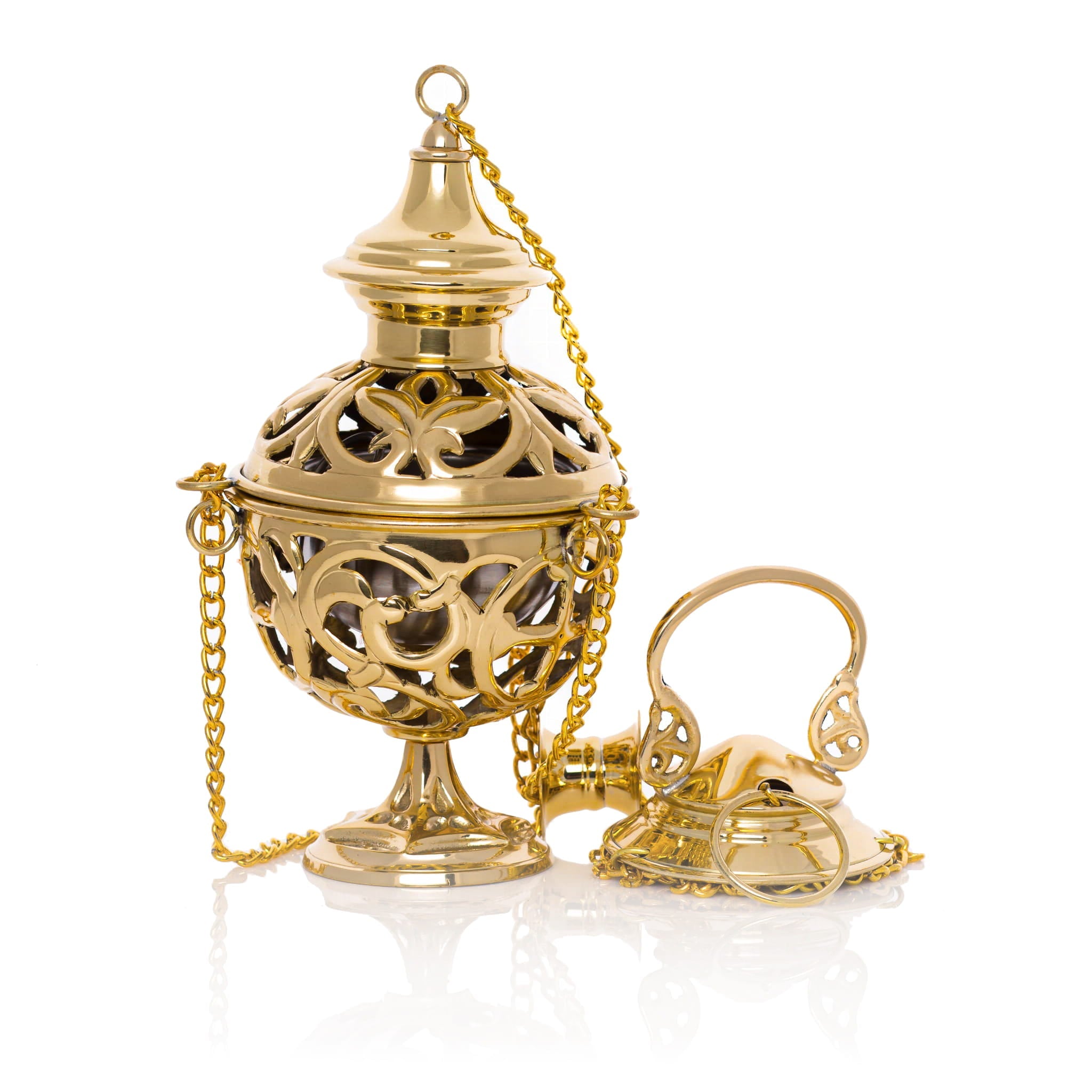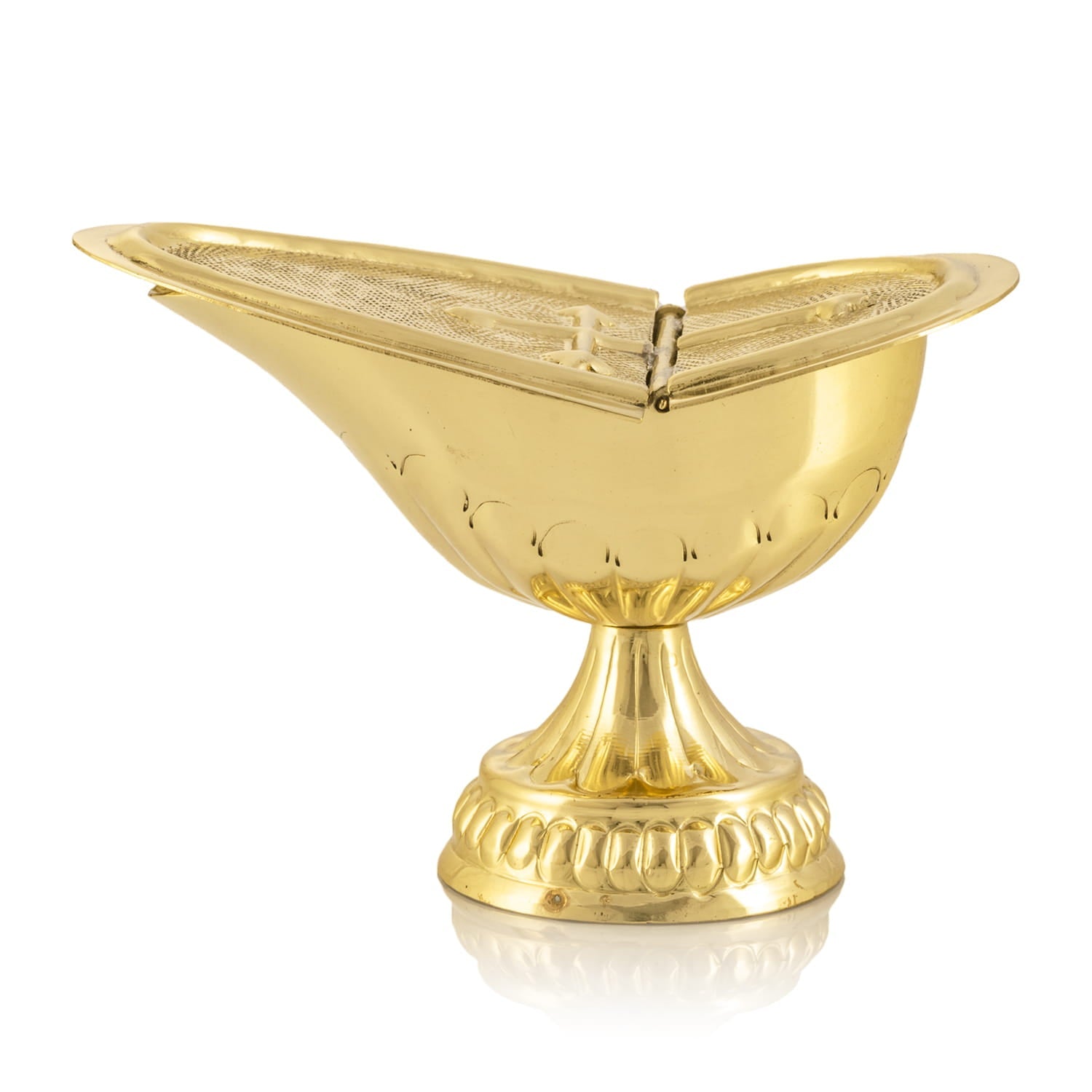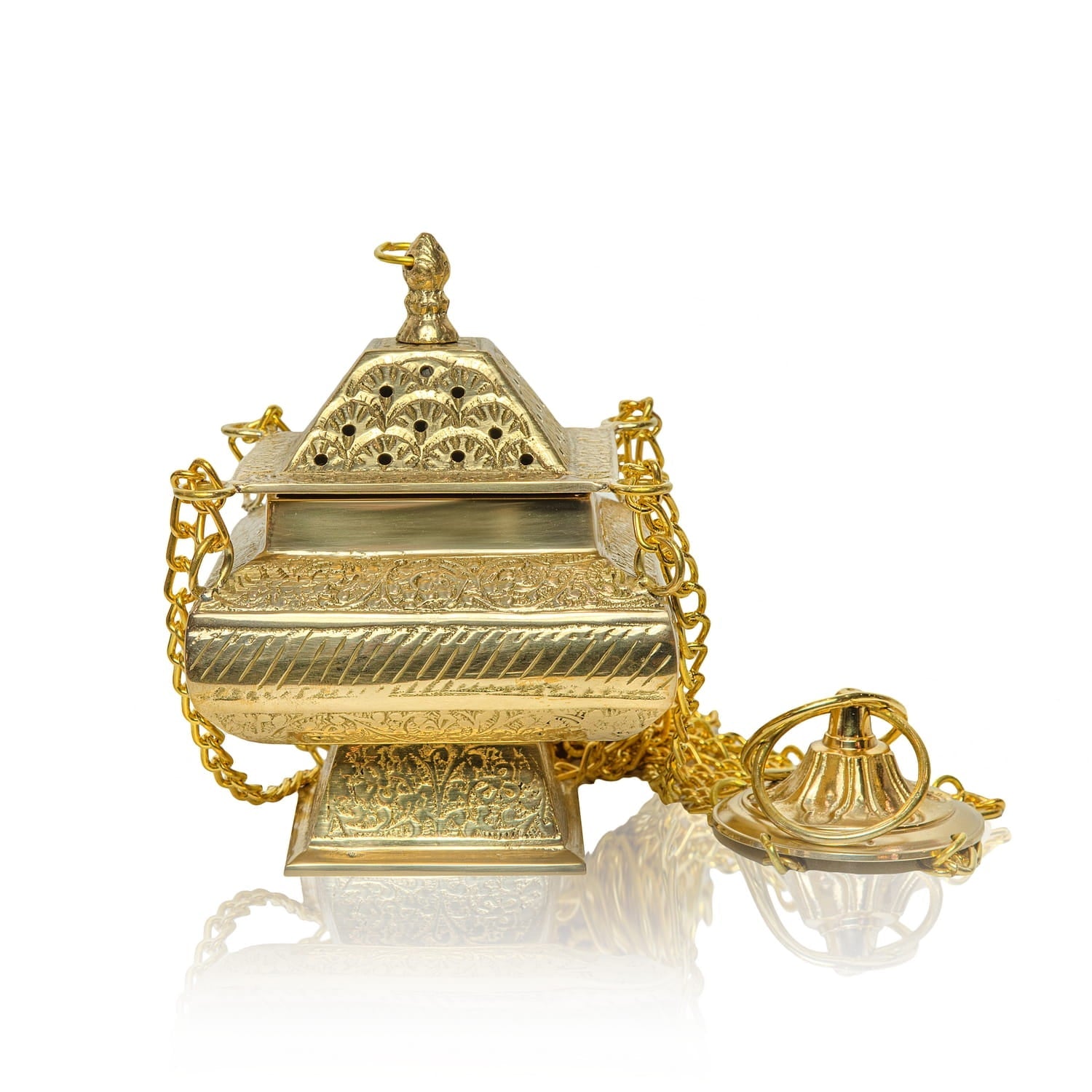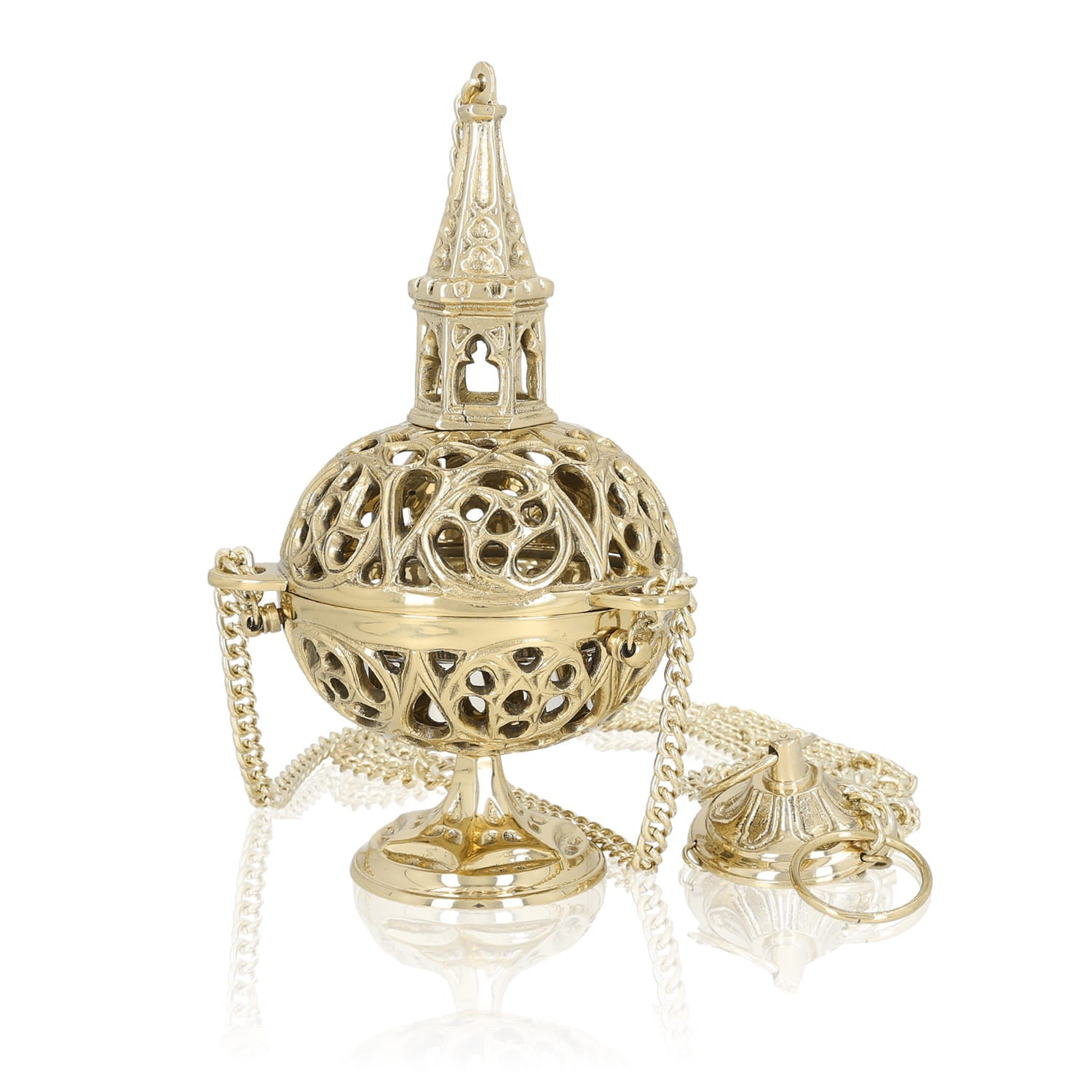Thuribles and Boats
Thuribles and Boats: Elevating Liturgical Worship
What are Thuribles and Boats?
Thuribles, also known as censers, are essential liturgical vessels used in various Christian traditions, including the Catholic, Anglican, and Orthodox churches. They are designed to hold burning incense, which releases a fragrant smoke that symbolizes prayers rising to heaven, purification, and the presence of God. The boat, or incense boat, is a smaller vessel that accompanies the thurible, holding the unburnt incense grains ready to be placed on the hot charcoal within the censer.
The Significance of Incense in Liturgy
The use of incense in worship has ancient roots, predating Christianity. In the Old Testament, incense was offered in the Temple as a sign of adoration and sacrifice. Christians adopted this practice, seeing incense as a powerful symbol of prayer ascending to God, as described in Psalm 141:2: Let my prayer be set forth before thee as incense and the lifting up of my hands as the evening sacrifice.
The fragrant smoke also represents the sweet savor of Christ's sacrifice and the presence of the Holy Spirit. The visual aspect of the rising smoke adds a sense of mystery and reverence to the liturgical celebration, creating a sacred atmosphere that encourages contemplation and devotion.
Types of Thuribles
Thuribles come in various designs and materials, reflecting the diverse traditions and artistic styles of different Christian communities. Some common types include:
- Swing Thuribles: These are the most common type, featuring a bowl suspended by chains. The thurifer (the person swinging the thurible) can swing it to disperse the incense smoke throughout the worship space.
- Standing Thuribles: These thuribles have a base and remain stationary during use. They are often used in smaller chapels or for specific ceremonies.
- Hand Thuribles: Smaller versions designed to be held in the hand, often used for blessings or personal devotions.
Materials and Craftsmanship
Thuribles are typically crafted from durable and heat-resistant materials such as brass, bronze, silver, and occasionally gold. The craftsmanship involved in creating these sacred vessels is often intricate, with detailed engravings, embossed designs, and symbolic ornamentation. Many thuribles feature Christian symbols such as crosses, angels, saints, and biblical scenes.
The Incense Boat: A Companion to the Thurible
The incense boat is a small, often boat-shaped vessel designed to hold the unburnt incense. It typically has a hinged lid to keep the incense fresh and prevent it from spilling. Like thuribles, incense boats can be made from various materials, including brass, silver, and gold, and may be adorned with religious symbols.
How to Use a Thurible and Boat
Using a thurible and boat requires some practice and knowledge of liturgical protocols. Here's a general overview:
- Prepare the Thurible: Place a piece of lit charcoal in the bowl of the thurible. Allow the charcoal to heat up until it glows red.
- Add Incense: Using a small spoon from the incense boat, carefully place a few grains of incense onto the hot charcoal.
- Swing or Present the Thurible: Depending on the type of thurible, either swing it gently to disperse the smoke or present it reverently to the altar, the congregation, or specific individuals.
- Refill as Needed: As the incense burns, add more grains from the boat to maintain a steady stream of fragrant smoke.
The Role of the Thurifer
The thurifer is the person responsible for carrying and swinging the thurible during liturgical celebrations. This role is typically performed by an altar server or a member of the clergy. The thurifer must be trained in the proper techniques for handling the thurible safely and reverently, ensuring that the incense smoke is distributed effectively and without causing discomfort to those present.
Maintaining Your Thurible and Boat
Proper care and maintenance are essential to ensure the longevity and beauty of your thurible and boat. Here are some tips:
- Clean Regularly: After each use, allow the thurible to cool completely. Remove any remaining ash or charcoal. Wipe the interior and exterior with a soft cloth.
- Polish as Needed: Use a metal polish specifically designed for the material of your thurible and boat to maintain their shine.
- Store Properly: Store your thurible and boat in a dry, safe place to prevent damage or tarnishing.
Choosing the Right Thurible and Boat
When selecting a thurible and boat, consider the following factors:
- Liturgical Tradition: Choose a style that aligns with your church's liturgical tradition and aesthetic preferences.
- Size: Select a size that is appropriate for the size of your worship space and the number of people present.
- Material: Consider the durability, appearance, and cost of different materials such as brass, silver, and gold.
- Craftsmanship: Look for high-quality craftsmanship and attention to detail.
- Budget: Set a budget and find a thurible and boat that meets your needs and fits your financial constraints.
Where to Purchase Thuribles and Boats
Thuribles and boats can be purchased from various sources, including:
- Church Supply Stores: These stores specialize in providing religious articles and liturgical supplies.
- Online Retailers: Many online retailers offer a wide selection of thuribles and boats at competitive prices.
- Artisan Workshops: Some artisan workshops specialize in creating handcrafted thuribles and boats.
The Enduring Symbolism of Incense
The use of thuribles and boats continues to be an important part of Christian worship, connecting believers to a rich tradition that spans centuries. The fragrant smoke serves as a tangible reminder of the presence of God, the power of prayer, and the beauty of liturgical celebration. By carefully selecting and maintaining these sacred vessels, churches can enhance the worship experience and create a more profound sense of reverence and devotion.
Thuribles and Boats: More Than Just Objects
Thuribles and boats are more than just objects they are instruments of worship that connect us to the divine. They embody the rich symbolism of incense, representing our prayers ascending to heaven, the purification of our souls, and the presence of God in our midst. As we use these sacred vessels, let us be mindful of their significance and allow them to draw us closer to the heart of God.
Exploring the History of Thuribles
The history of thuribles is a fascinating journey through time, reflecting the evolving practices and artistic expressions of various Christian traditions. From the simple clay censers of the early church to the ornate metal masterpieces of the medieval period, thuribles have always been integral to liturgical worship. Examining their evolution provides valuable insights into the development of Christian ritual and the enduring power of symbolism.
The Spiritual Significance of the Incense Boat
Often overlooked, the incense boat holds a profound spiritual significance. It represents the vessel that carries the potential for prayer, the promise of purification, and the fragrance of devotion. Just as a boat carries precious cargo across the sea, the incense boat carries the unburnt incense, symbolizing our unuttered prayers and the potential for spiritual growth. It reminds us that even in the smallest of things, we can find profound meaning and connection to the divine.
Common Mistakes to Avoid When Using Thuribles
While the use of thuribles may seem straightforward, there are several common mistakes to avoid to ensure a safe and reverent experience:
- Using too much incense: Overloading the thurible with incense can create excessive smoke and an overpowering odor, potentially causing discomfort to those present.
- Using low-quality charcoal: Cheap charcoal may not burn evenly or produce enough heat, resulting in a weak or inconsistent stream of smoke.
- Swinging the thurible too vigorously: Excessive swinging can cause hot embers to spill out, posing a safety hazard.
- Neglecting proper ventilation: Using thuribles in poorly ventilated spaces can lead to smoke buildup and respiratory irritation.
- Failing to clean the thurible regularly: Neglecting to clean the thurible can result in a buildup of residue and a diminished fragrance.
Practical Solutions for Enhancing the Thurible Experience
To elevate the thurible experience and ensure a meaningful and reverent practice, consider these practical solutions:
- Invest in high-quality incense: Opt for natural resins and essential oils for a more authentic and fragrant experience.
- Use self-lighting charcoal: These charcoal discs ignite quickly and burn evenly, providing a consistent heat source.
- Practice mindful swinging: Swing the thurible gently and deliberately, focusing on the symbolism of the rising smoke.
- Ensure proper ventilation: Open windows or use a fan to circulate air and prevent smoke buildup.
- Clean the thurible after each use: Remove any remaining ash or charcoal and wipe the interior with a soft cloth.
The Enduring Legacy of Thuribles and Boats in Worship
Thuribles and boats have stood the test of time, remaining integral components of Christian worship across various denominations. Their enduring presence is a testament to the power of symbolism, the human desire for connection to the divine, and the beauty of liturgical tradition. As we continue to use these sacred vessels, let us be mindful of their rich history and profound meaning, allowing them to enrich our worship experience and draw us closer to God.
Selecting the Right Incense for Your Thurible
Choosing the right incense is crucial for creating a pleasant and meaningful worship experience. Consider the following factors:
- Fragrance: Select a fragrance that resonates with your personal preferences and the liturgical season.
- Ingredients: Opt for natural resins and essential oils for a more authentic and long-lasting aroma.
- Smoke Production: Choose an incense that produces a moderate amount of smoke, avoiding excessive buildup or irritation.
- Burning Time: Consider the burning time of the incense to ensure it lasts throughout the duration of the service.
- Allergies: Be mindful of any allergies or sensitivities among the congregation when selecting an incense.
Caring for Your Incense Boat
The incense boat, though often small, plays a vital role in the thurible ritual. Proper care will ensure its longevity and functionality:
- Clean Regularly: Wipe the boat with a soft cloth to remove any dust or residue.
- Store Properly: Keep the boat in a dry and safe place to prevent damage.
- Handle with Care: Avoid dropping or mishandling the boat, as it can be fragile.
- Replace Hinges if Needed: If the hinges become loose or damaged, consider replacing them to ensure the boat functions properly.
The Thurible as a Symbol of Transformation
The thurible can be seen as a symbol of transformation, representing the process of turning something ordinary (incense) into something sacred (fragrant smoke). This transformation mirrors the spiritual journey of believers, who strive to transform their lives through prayer, repentance, and devotion. The rising smoke symbolizes the ascent of our souls towards God, purified and renewed by His grace.
Incorporating Thuribles and Boats into Home Devotions
While thuribles and boats are primarily used in church settings, they can also be incorporated into personal home devotions. Creating a small altar with a thurible and incense can provide a sacred space for prayer, meditation, and spiritual reflection. The fragrant smoke can help to create a calming and reverent atmosphere, allowing you to connect with God in a deeper and more meaningful way.
The Future of Thuribles and Boats
As Christian traditions continue to evolve, thuribles and boats will likely remain essential components of liturgical worship. While the designs and materials may change over time, the underlying symbolism of incense and the human desire for connection to the divine will endure. Thuribles and boats will continue to serve as powerful reminders of the presence of God, the power of prayer, and the beauty of liturgical celebration for generations to come.

